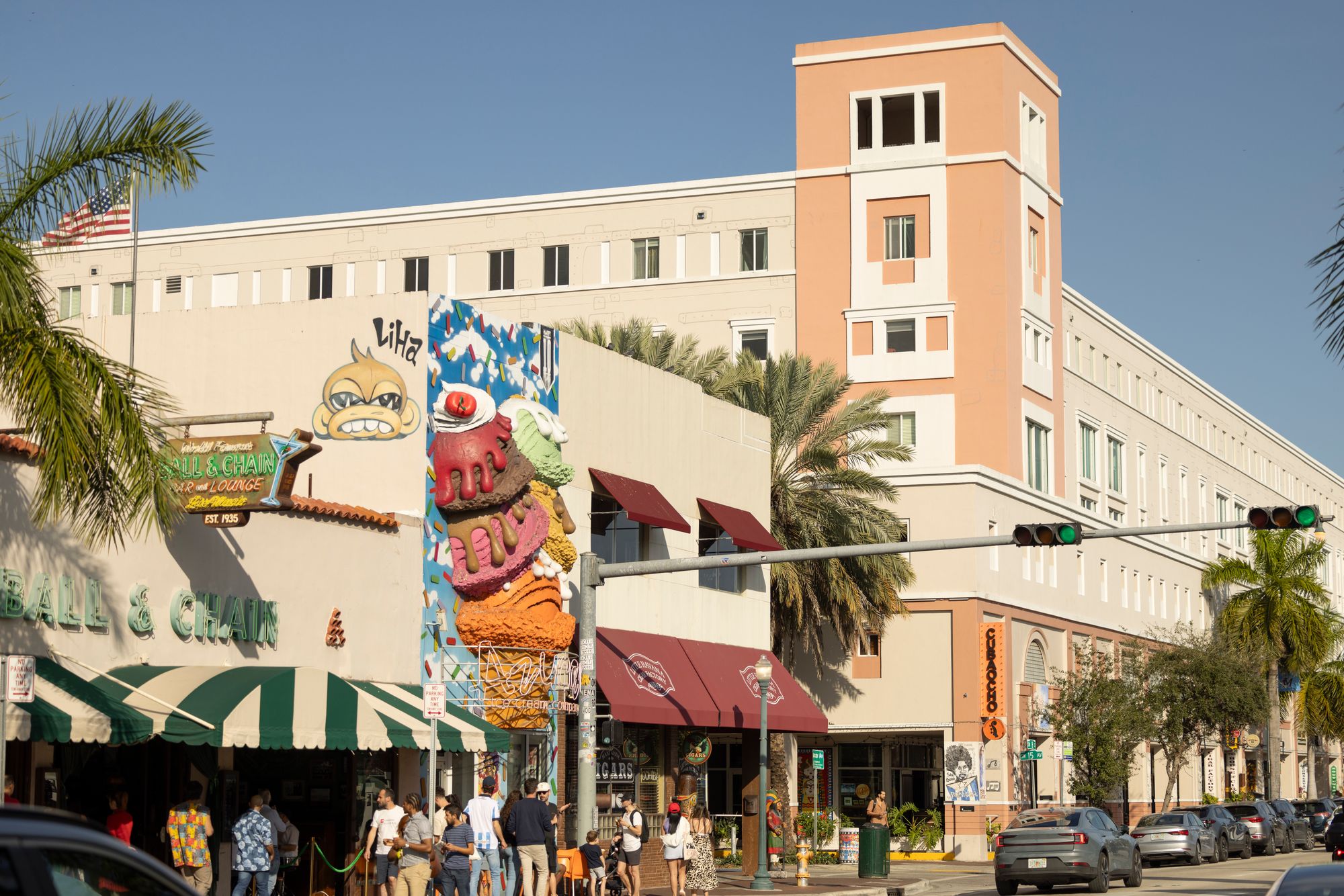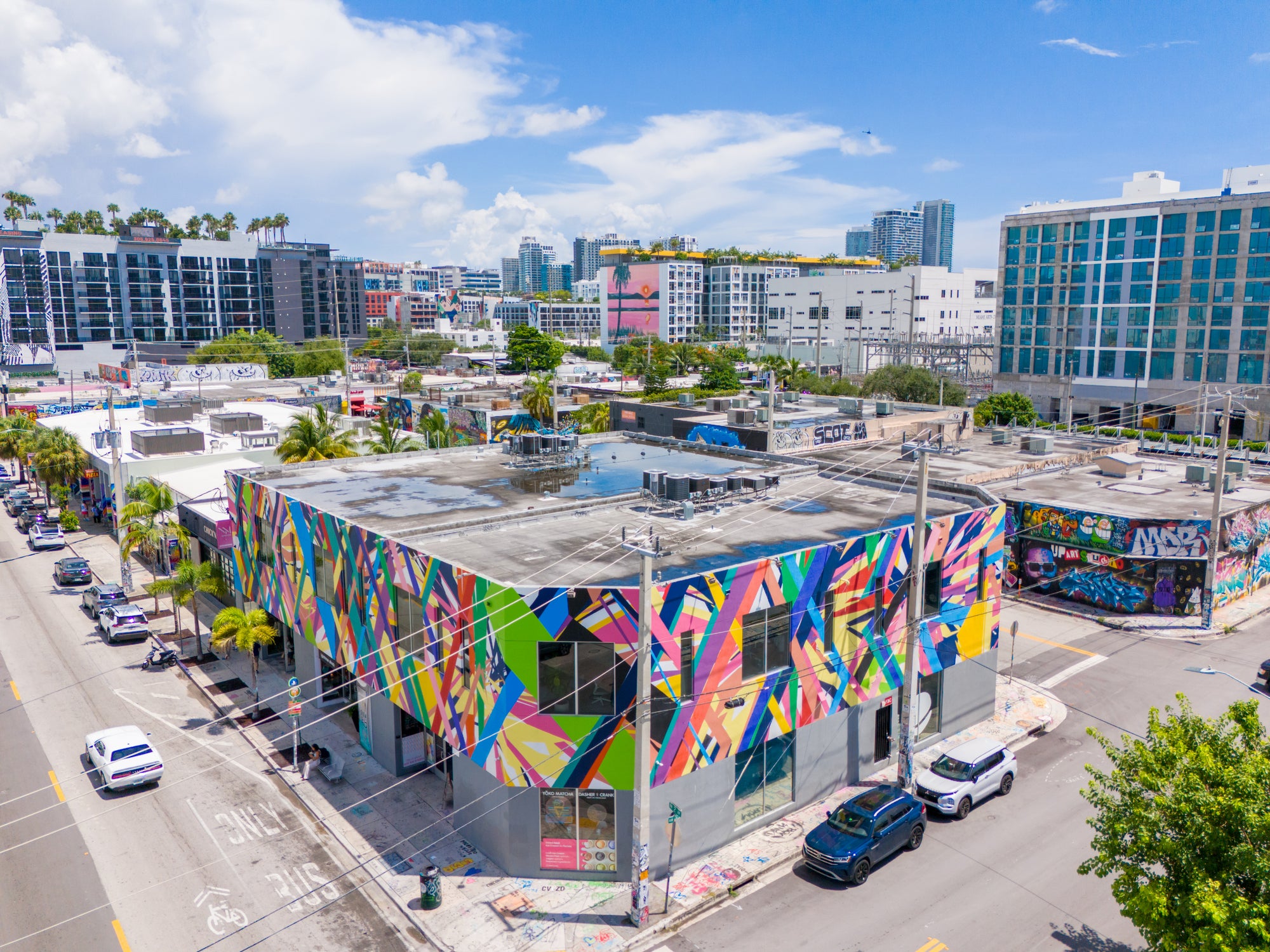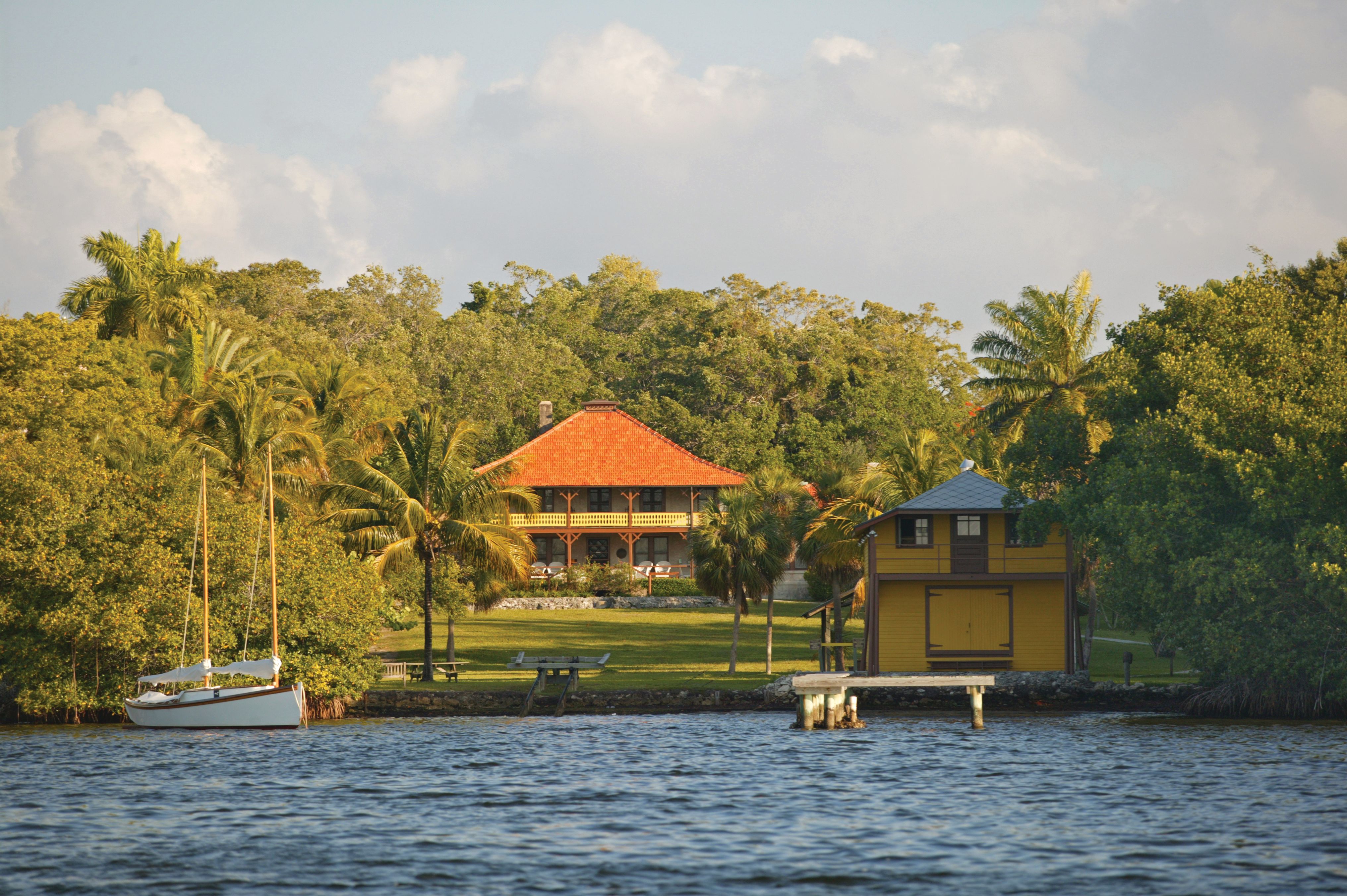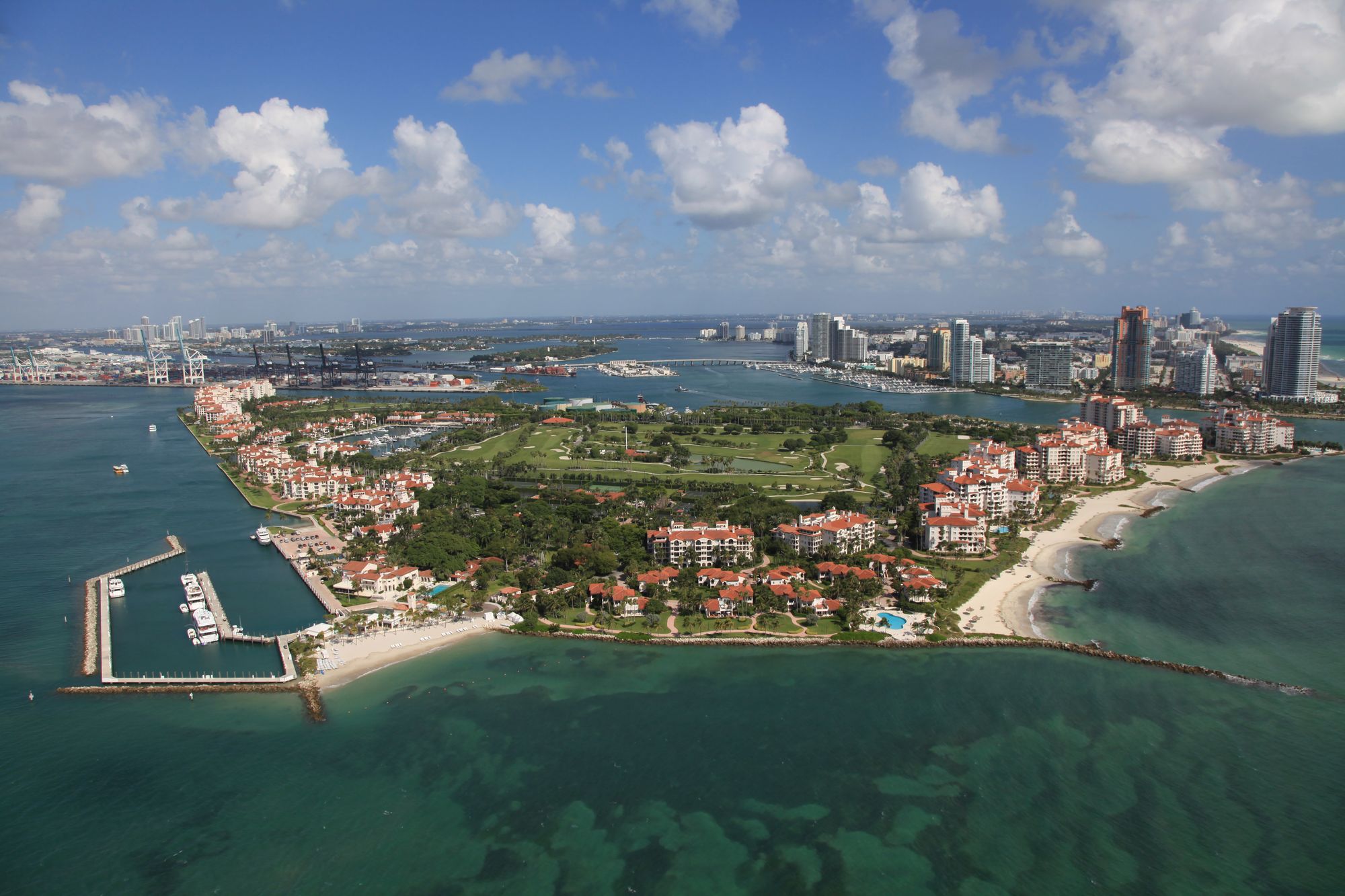Pool parties, beaches, nightclubs and soaring skyscrapers — for many, that’s Miami.
But the city is so much more. Here, we get under the skin of the Sunshine State’s most famous metropolis, stepping beyond the party scene into its vibrant patchwork of neighborhoods. Each has a fascinating story to tell, and each reveals a side of the city that just might surprise you.
There’s an Art Deco wonderland, a soulful Cuban enclave, and a spellbinding district where houses borrow architectural styles from around the world.
Look closer and you’ll find one of the world’s largest open-air art galleries, a lush neighborhood so overgrown it feels like a jungle village, and island mansions belonging to the rich, famous — and infamous.
1. The Art Deco Historic District — dazzling architectural glamour
In Miami Beach’s Art Deco Historic District, around 800 preserved Art Deco buildings are packed into one walkable, eye-opening square mile.
Is there anywhere else in the world with so much architectural glamour in one place? Walking through the area feels like wandering an open-air Art Deco museum, with the endeavours of over 100 architects on display — among them visionaries such as Henry Hohauser, L. Murray Dixon, and Albert Anis.
The style blossomed between 1920 and 40 — although the term “Art Deco” wasn’t actually coined until the 1960s — and its alluring signature features abound in the district’s center, which includes Ocean Drive, Collins Avenue and Washington Avenue.
Stroll these thoroughfares and you’ll be enveloped in a bewitching dreamscape of pastel colors, chrome accents, shimmering terrazzo floors and Egyptian motifs (when King Tut’s tomb was uncovered in 1922, Egyptomania erupted in design circles).
Many of the buildings also have classic Art Deco face-like qualities, with “eyebrows” jutting over windows and entranceways forming a “mouth.”
You’ll also notice an absence of skyscrapers. Many of the buildings were built in the Depression era, and tall structures were obviously more expensive. There was also a city rule requiring elevators for any structure over three stories, so heights were limited to save money.
Top Art Deco landmarks include the U.S. Post Office (1937) and Fillmore Miami Beach at the Jackie Gleason Theater (1940) on Washington Avenue; Miami Beach City Hall (1927) on Convention Center Drive; and The Lincoln Theatre (1936) on Lincoln Road. Popping into the swish Andaz Miami Beach on Collins Avenue is also highly worthwhile. It’s housed in a 1930s Art Deco building, with interiors that pay homage to the look.
For a deeper dive, visit the Art Deco Museum on Ocean Drive, the starting point for walking tours by the Miami Design Preservation League.
Read more: The best bonus perks your entry ticket covers at 6 top US theme parks (including Disney and Universal)
2. Coral Gables and its quirky themed ‘villages’

The garden suburb of Coral Gables, southwest of downtown Miami, is a world apart from the pulsating city.
In this hidden oasis, oaks, banyans, palms and mahoganies form tree tunnels along residential boulevards, with fountains and plazas adding to the serene atmosphere.
It’s an incredibly relaxing place to spend time, just as its creator, visionary developer George E. Merrick, intended.
He conceived the neighborhood in the early 1920s, setting out to transform 3,000 acres of his family’s citrus plantation into the “City Beautiful.”
Greenery was a core theme of Merrick’s vision, while his passion for architecture in other parts of the world inspired several unique “villages.”
The homes on Santa Maria Street, with their tall white pillars and two-story porticoes, form a Greek-style “Pioneer Village,” while a “French Normandy Village” can be found on LeJeune Road and the 400 block of Vizcaya Avenue. Here, the properties have timbered exteriors that take you back in time to 15th-century France.
There’s also an Italian Village on Monserrat, Palmarito and Altara avenues; a Dutch South African Village on LeJeune Road, Riviera Drive and Maya Street; and even a bright red Chinese Village on Riviera Drive and Menendez, Castania, Maggiore and Sansovino avenues.
Further explorations will reveal a stunning outdoor Venetian pool set in a rock quarry (it’s one of the few pools on the National Register of Historic Places), the stately Biltmore hotel and, on pedestrian-only Giralda Plaza promenade, an enticing array of boutiques and restaurants.
Read more: Forget Route 66: Five under-the-radar road trips that get to the heart of America
3. Little Havana — a slice of Cuba in the heart of the city

Take a trip to Little Havana and you can experience a piece of Cuba.
This vibrant neighborhood is a living tapestry of Cuban heritage — and there’s plenty to weave into a visit.
Your first port of call? On Calle Ocho, the main thoroughfare, stop for a potent shot of sweet Cuban coffee at Versailles Restaurant’s Havana-style streetside window (orventanita). Then watch older Cubans playing dominoes next door in Máximo Gómez Park, known locally as Domino Park — a spot you might recognize from the hit 1980s Miami Vice TV series, where it appeared in several establishing shots.
A few yards west, drop into the Cuba Tobacco Cigar Co., where you can watch a master roller at work and pick up quality cigars (for the uninitiated: the darker the wrapper, the stronger the smoke).
When hunger strikes, head back to Versailles for time-honored Cuban staples, from black beans and rice to hearty beef, chicken and pork sandwiches. For a more nostalgic setting, Old’s Havana serves classic dishes amid vintage 1950s décor — and pours one of the best mojitos in town.
Fancy making a night of it? Ball & Chain is a legendary Little Havana bar that’s been a hub for cocktails, live music and dancing since 1935 — it even has its own line of merch.
Read more: A Euro trip without leaving America: Seven US towns that look exactly like places in Europe
4. Wynwood — a giant open-air art gallery

Wynwood’s many warehouse walls have long attracted graffiti artists, but before the early 2000s their work was illegal.
However, developer Tony Goldman saw the area’s potential and began brokering deals between building owners and artists, allowing them to paint legally to their heart’s desire.
The result? A giant outdoor art gallery and a centerpiece, Wynwood Walls, that attracts some of the world’s best muralists.
Street art is liberally applied throughout the area and can be enjoyed for free, but Wynwood Walls is the ticketed focal point, featuring a rotating collection of murals and sculptures by over 120 artists from more than 25 countries.
Top returning artists include “Mantra,” originally from France; duo Jessie Unterhalter and Katey Truhn; and Miami’s very own Ernesto Maranje, a former member of the U.S. Coastguard who discovered a gift for painting wildlife scenes.
Elsewhere in this pedestrian-friendly, cultural oasis you’ll find standout food (try classy Bakan for Mexican flavors that pop) and top-tier bars (try Gramps for its potent Mezcal Penicillin cocktail made with scotch, ginger, honey and lemon).
Read more: The best and worst US cities for pedestrians and cyclists named
5. Coconut Grove — the jungle by the sea

It took some effort to establish Miami’s oldest neighborhood, Coconut Grove, on the edge of Biscayne Bay.
When settlers arrived in the 1870s, the vegetation was so dense they had to hack through it with machetes.
After thousands of coconuts washed ashore from a shipwreck, they planted the palms that gave the area its name.
Those first settlers would probably still recognize their home, which remains dreamily overgrown, more akin to a tropical island village in a forest than an urban neighborhood.
Tangled banyan trees, strangler figs, oak trees, and those same coconut palms weave around the buildings so densely that it’s actually a few degrees cooler here than downtown.
You’ll even see exotic creatures patrolling the semi-wild area, including parrots and giant iguanas.
Top sights include The Barnacle Historic State Park, home to The Barnacle, the 1891 residence of sailor and naturalist Ralph Middleton Munroe, one of the area’s founding figures. There are also myriad shopping and dining options, including two Michelin-starred restaurants — Los Félix and Ariete — while CocoWalk is an upscale open-air hub for boutiques and eateries that’s a destination in itself.
Coconut Grove is also home to Miami City Hall, housed in the former Pan American Airways seaplane terminal — a throwback to the glamorous 1930s flying boat era.
Read more: Meet the luxury travel ‘fixer’ whose calls with demanding mega-rich clients have made her a social media star
6. Celebrity islands

Most of Miami’s fascinating neighborhoods are walkable and easily reached by car or public transport.
But taking to the water is the only way to get a proper look at the most exclusive areas — the gated island havens of the rich and famous in Biscayne Bay.
Hop on a Thriller Miami Speedboat Adventure and you’ll glimpse their lavish waterfront retreats in exhilarating style. Buckled into a huge powerboat, you’ll zip past Star, Hibiscus, Palm, and Fisher Islands, associated with famous names past and present.
Star Island, home to mansions rumored to belong to Gloria Estefan, Shaquille O’Neal and Sean “Diddy” Combs, is the most well-known, while Hibiscus Island was once home to the glittering Latin Quarter nightclub, frequented by Frank Sinatra, Dean Martin, and Sammy Davis Jr.
The boat sweeps past Al Capone’s restored 1920s mansion on Palm Island and skims the turquoise waters beside the most exclusive island of them all — Fisher, accessible only by private boat or a ferry reserved for residents and their guests. Former residents include Oprah Winfrey and Boris Becker.
Whether you’re tantalized by celebrity lairs or not, this is a thrilling way to see Miami at its most decadent.
Ted visited Miami as a guest of British Airways Holidays.
British Airways Holidays offers three nights at the Andaz Miami Beach by Hyatt, from £1,299pp + $95pp resort fee (payable locally), travelling on selected dates between May 1 – May 31, 2026 inclusive. Visit britishairways.com.
Read more: Twenty-two incredible free things to do and see in New York City, from beaches to secret gardens

